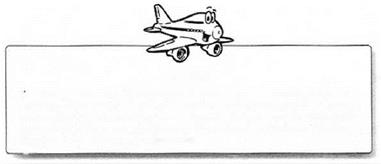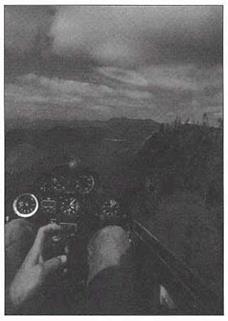Nice Pair of Wingtips
Ask an aerodynamicist what the most efficient wing is, and she’d say ”One that has no wingtips.“ Of course, every wing has to have a tip of some sort, since every wing has to end somewhere. So what does this curious statement mean? Let’s find out.
As we saw in Chapter 8, the curved, or ”cambered,“ upper surface of the wing creates an area of low pressure, or pressure that is at least lower than the air traveling along the bottom side of the wing. Physics tells us that the relatively high-pressure air under the wing has a natural tendency to migrate toward the area of low pressure above. For the most part, the wing’s structure gets in the way, but there’s one place on every wing where the high-pressure air below can see its way clear to the low- pressure air above: the wingtip.
|
Vince Miller follows Max Karst down a ridge of the Cascade foothills near Seattle. (Vince Miller) |
Because the high-pressure air has an escape route at the wing tip, the air below the wing takes on a slightly ”spanwise flow,“ as designers would call it. In other words, instead of flowing straight from the leading edge toward the trailing edge, the highpressure air under the wing shuffles slightly toward the wingtip. And the closer to the wingtip the air moves, the more rapidly it moves.
At the very tip of the wing, the high-pressure air swirls upward, creating a little tornado of twisting air called a ”vortex.“ This vortex creates a force that pulls backward on the wing in the form of drag. To reduce this drag, aerodynamicists discovered that if air has less distance to travel over from the wing’s leading edge to its trailing edge, the spanwise flow can be reduced. So they shaped the wing as thin as possible, while lengthening them to keep the same total area.
With the spanwise flow reduced, the power of the wingtip vortex is weakened, and a weak vortex means less drag.
 Plane Talk
Plane Talk
Aircraft designers are smart folks. They figure, if the wingtip vortex is always going to be there anyway, why not make it do a little work? They answered that question by turning the very end of the wing upward to create a “winglet" A winglet looks like someone has bent a couple of feet of both wingtips straight up and down. This shape helps squeeze a little bit of upward lift from the wingtip vortex.
■ • ■ –v – ~ – ■ – – – —— —’












